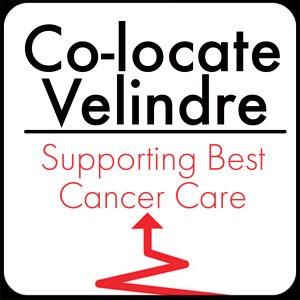We’ve described the emergency ambulance transfers of critically ill patients from Velindre to better equipped hospitals previously on this site .
Two patients a week from only forty beds and one junior doctor on the premises out of hours.
But there are many other transfers every week between Velindre and larger hospitals. Some are patients from Velindre needing investigations that are available as a matter of course in Cancer Centres colocated with acute hospitals. Others carry patients with cancer who are too sick to be looked after in Velindre from their acute hospital beds to Velindre for radiotherapy.
Anyone who has travelled by ambulance will recognise the discomfort, anxiety and fatigue that result. These transfers would be unnecessary if Velindre was co-located on an acute hospital site.

Routine investigations and treatment
Velindre’s isolated location in Whitchurch means that it can’t offer a lot of routine investigations. For example, patients needing endoscopy (internal camera) examination or cardiology investigations must be transferred to UHW and back. Similarly, patients needing treatments like dialysis (for kidney failure), interventional radiology (fitting stents and drains) or surgical procedures must also make the journey. In colocated units, all of these services are available to patients on-site.
These transfers are much more common than emergency transfers- we have data showing over 130 interventional radiology procedures alone were carried out in UHW in 2019.
Yet New Velindre leadership has opted for a model that will continue to require these transfers for the whole life of the new Cancer Centre.
Patients with cancer in acute hospitals
Velindre is not the only hospital in South East Wales that cares for cancer patients. Many patients with cancer are elderly or have other medical conditions that mean they are too frail and unwell to be looked after in Velindre. So they may be admitted to other hospitals and transferred to Velindre daily for radiotherapy. Again, the strain on already very sick and frail patients can only be imagined.
Care for patients with haematological cancers (for example leukaemia) is also provided at the University Hospital of Wales (UHW). Many of these patients need radiotherapy. again, this requires transfer to and from Velindre.
Children with cancer are looked after in the Paediatric Haematology and Oncology Unit, in the University Hospital of Wales. Children needing radiotherapy are transferred to Velindre and back daily. Despite the best efforts of the Velindre and UHW staff, just imagine how distressing that must be for the children and their parents
What about continuity of care?
Patient outcomes are best when there is ‘continuity of care’- one team of clinicians responsible for all of their care. This can’t be provided if patients are transferred back and forward between hospitals. What happens to the patient who suffers complications after their transfer back to their original unit?
How can this be good for patients or the wider NHS?
Of course, each transfer requires two patient journeys, each manned by trained staff. In theory, at least, there should be a bed or space waiting to receive each patient, so long waits for beds should not be required. This doesn’t always work out, though. We know of patients who have had long waits for their treatment post transfer.
These transfers provide poor patient experience and are an inefficient use of scarce NHS resources. They would not be needed in a colocated Cancer Centre. Despite this, New Velindre leadership has opted for a model where this inefficient, antiquated system is ‘baked in’ for the whole life of the new Cancer Centre.

